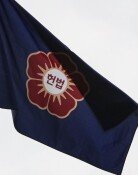Up to 1,450 Won in Royalties for a 2,500-Won Rose Tree
Up to 1,450 Won in Royalties for a 2,500-Won Rose Tree
Posted April. 13, 2005 23:08,
A total of 31 plants, including strawberries and orchids, will be included next year in the plant strains protection list, predicting royalty burdens for domestic farmers.
Domestic farmers rejected the payment of royalties by stating that they have difficulties generating profits by growing plants with foreign patents, while seedling companies have called for seed patent rights, effectively launching a seed war.
According to the Ministry of Agriculture and National Seed Management Office on April 13, royalty payments for foreign plants are set to increase to 70 billion to 100 billion won next year from three billion won in 2000.
Plants protected by patents will amount to 186 next year, 3.3 times higher than in 2000 (57 cases).
Royalty fees are calculated by multiplying the royalty ratio (10 percent) of the yearly amount of total production estimated costs of foreign-patented plants. Royalty fees for certain plants, such as roses and chrysanthemums, are 100 to 120 percent of the original costs, so the real royalty rate may be higher.
The increase in royalty fees for foreign plants is due to the Ministry of Agricultures policy of increasing plant types covered by patents since 1998, based on the seed industry law.
The Ministry of Agriculture will select an additional 31 plants next year for strain protection rights. Plants in which foreign seedling companies have developed new strains, such as strawberries, leeks, cymbidiums (a type of orchid), and buckwheat are included.
The selections of strain protection rights are rights offered to developers of novel plant strains for commercial use, and are also called patent rights.
Starting from next year, strawberry prices will carry a 10 to 100 won per bunch royalty fee. This is over 10 percent higher than the original price (100 won) for a single bunch. Royalties for a single rose bush, currently selected as a protected strain, are 1,450 won, 1.4 times higher than the original (1,050 won).
Lee Young-bok, a professor of horticulture at Chungnam University, said It is hard for subsistence farmers to continue gardening while paying a 10 percent royalty fee, and that should the royalty fees be passed on to the consumers, demand will decrease, causing concerns among agricultural households.
Patent registration for seeds among seedling companies is also on the rise. Foreign seedling companies did not obtain a single patent in Korea until 2002, but obtained a sharp increase of 76 in 2003 and 273 in 2004.
Yearly patent registration rates for domestic research institutes were 76 for 2002, 234 for 2003, and 204 for 2004.
Byong-Ki Lee legman@donga.com eye@donga.com
Headline News
- Med professors announce intention to leave hospitals starting Thursday
- Bridge honoring Sgt. Moon Jae-sik unveiled in Pennsylvania
- Chief of Staff Chung tells presidential secretaries to stay away from politics
- US FTC bans noncompete agreements
- N. Korea launches cyberattacks on S. Korea's defense companies







